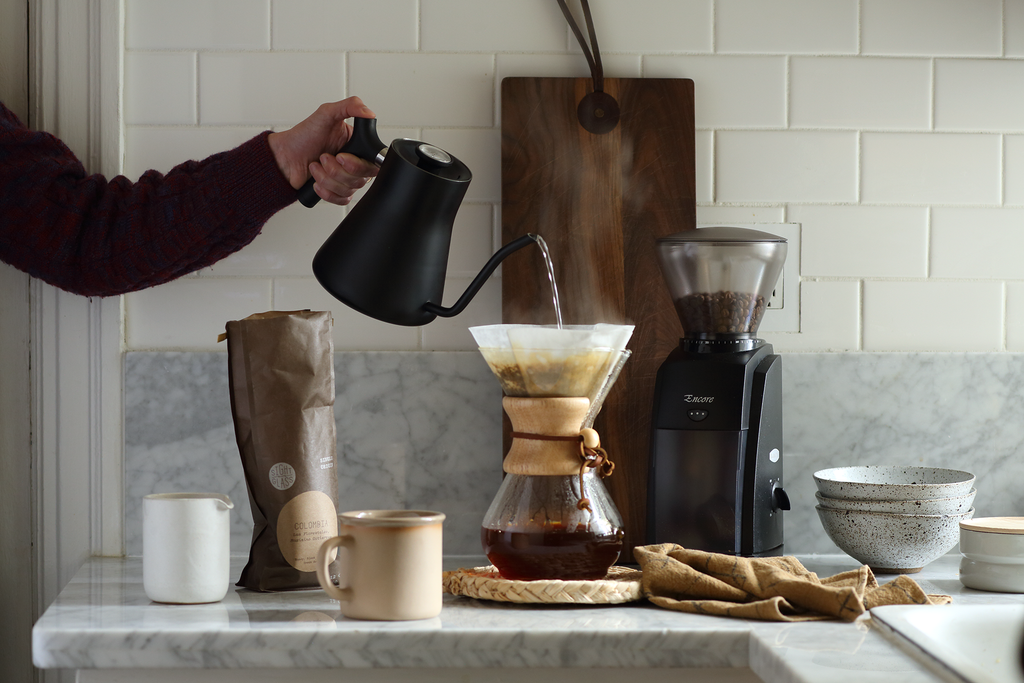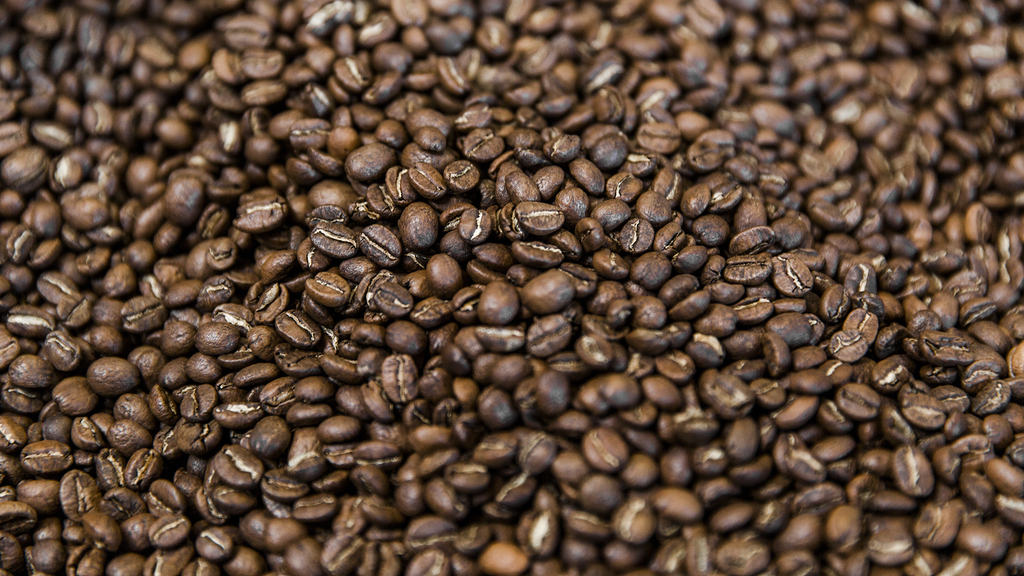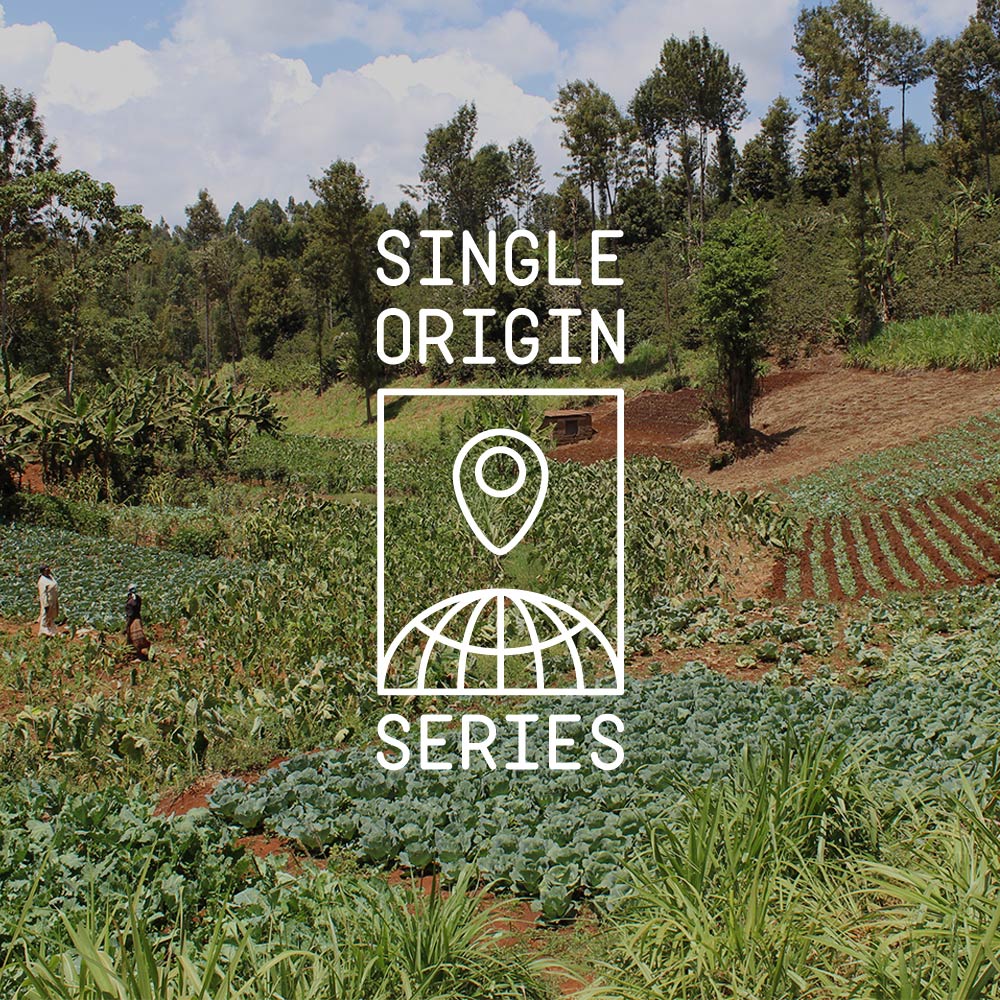One of the most powerful tools in your home coffee arsenal is the ability to control grind. You probably understand that there’s a difference between the fine, powdery grind of espresso grounds and the rough, sea salt coarseness of french press grounds, but you might not understand why we might choose one grind over another. The goal of this post is to help you understand the how and the why of coffee grinding.

Why We Grind

We grind coffee to increase coffee’s surface area and make it easier for water to extract soluble flavor compounds, oils, and volatile aromatics (the good stuff) from roasted coffee beans.
We grind coffee finely or coarsely based on the desired contact time between coffee and water. This is often dictated by the preferred brewing method, but it can also be a matter of personal taste. The finer the grind, the more exposed the coffee is, and the easier it is for water to extract soluble material quickly. The fastest brew method, espresso, benefits from a fine grind because of the short contact time between water and coffee. On the opposite end, cold brew uses a very coarse grind and requires a 12-24 hour brew time to extract a similar spectrum of flavors. Illustrated more visually:
Coarse Grind
Larger particles = Less surface area = Longer brew time
Fine Grind
Smaller particles = More surface area = Shorter brew time
Use the following chart to help you choose the right grind for your brew method:

How We Grind

There is a myriad of ways to grind coffee, from a mortar and pestle to the precise high-quality grinders that we use at Sightglass, but most home grinders fall into three basic categories:
Electric Burr Grinder
How They Work: Two ridged surfaces (burrs) rotate to crush and grind the beans until the resulting grounds are fine enough to pass through the gap between the burrs.
The Good: Easy to adjust the grind and produces a very consistent particle size.
The Bad: Higher cost, can be challenging to clean.
Grind Adjustment: Setting the distance between the burrs dictates the particle size. The closer that the burrs are set from one another, the finer the grind, the further from one another, the coarser the grind, similar to a standard pepper grinder. Most of these grinders use a stepped adjustment, with a numeric guide. We love the Baratza Encore which uses a 0-40 scale, allowing you a high level of precision in setting your grind.
Tips: Turning the machine on before adding beans to the hopper will improve consistency. Use the numerical grind settings and take notes on which setting taste’s the best for your chosen brew method.
Hand-crank Burr Grinder
How They Work: Functioning exactly like a burr grinder, but using a hand crank (and good ol’ elbow grease) as the power source, this is a great option for precision grinding at relatively low cost.
The Good: Less expensive than an electric grinder, compact, precise, no electricity needed.
The Bad: Lacks numeric settings, small grind chamber, difficult for larger batches, requires some physical exertion.
Grind Adjustment: A small thumbscrew inside the body of the grinder can be turned clockwise for a finer grind and counterclockwise for a coarser grind.
Tips: Using the burrs touching as “0”, measure how many rotations of the thumbscrew that it takes to achieve your favorite grind settings. Once you’ve found a good number, refine it by ½ and ¼ turns until you pinpoint the best position for your desired brew method.
Electric Blade Grinder
How They Work: Operating exactly like a home blender, a propeller-like blade rapidly slices the beans, breaking them down to smaller and smaller pieces.
The Good: Low cost, easy to clean.
The Bad: Hard to achieve a consistent grind, relatively imprecise.
Grind Adjustment: Time. Just like a blender, the longer that it runs, the smaller the particles get.
Tips: Shaking the grinder vertically (with lid secured) will help with grind consistency.
Tasting & Troubleshooting
The above guide is meant to be a starting point. At Sightglass, and across the industry, brewing a great cup of coffee often boils down to trial and error. We adjust the grind size, in large and micro-adjustments, to help achieve proper extraction. Generally speaking, when we brew coffee we first extract acids, followed by sweetness and complexity and eventually bitterness and unpleasant flavors. Under extracted coffee tastes thin and is dominated by acidity, while over-extracted coffee tastes bitter and metallic. Proper extraction lies between these extremes. The following guide should help you navigate this:
Problem: Coffee tastes weak and sour
Solution: Grind the coffee finer.
Reason: A finer grind will slow the flow of water through the grounds and allow water to extract more flavor compounds, balancing the acidity.
Problem: Coffee tastes bitter and metallic (iron/copper flavor)
Solution: Coarsen the grind.
Reason: Coarsening the grind will allow water to flow more freely through the grounds, reducing extraction and the bitter compounds that come with it.
Grind is only one part of the equation, but learning to confidently adjust grind will have a profound and positive effect on the way that you brew coffee.

No grinder? No problem. All of our coffees can be ground to complement your favorite brewing method.
Find Your Grind
---
Grant MacHamer has been in the specialty coffee industry for 11 years, currently serving as Director of Education for Sightglass Coffee. As a barista, educator and storyteller he seeks to improve our daily coffee rituals while sharing the stories of the countless people that make our morning cup of coffee possible.








